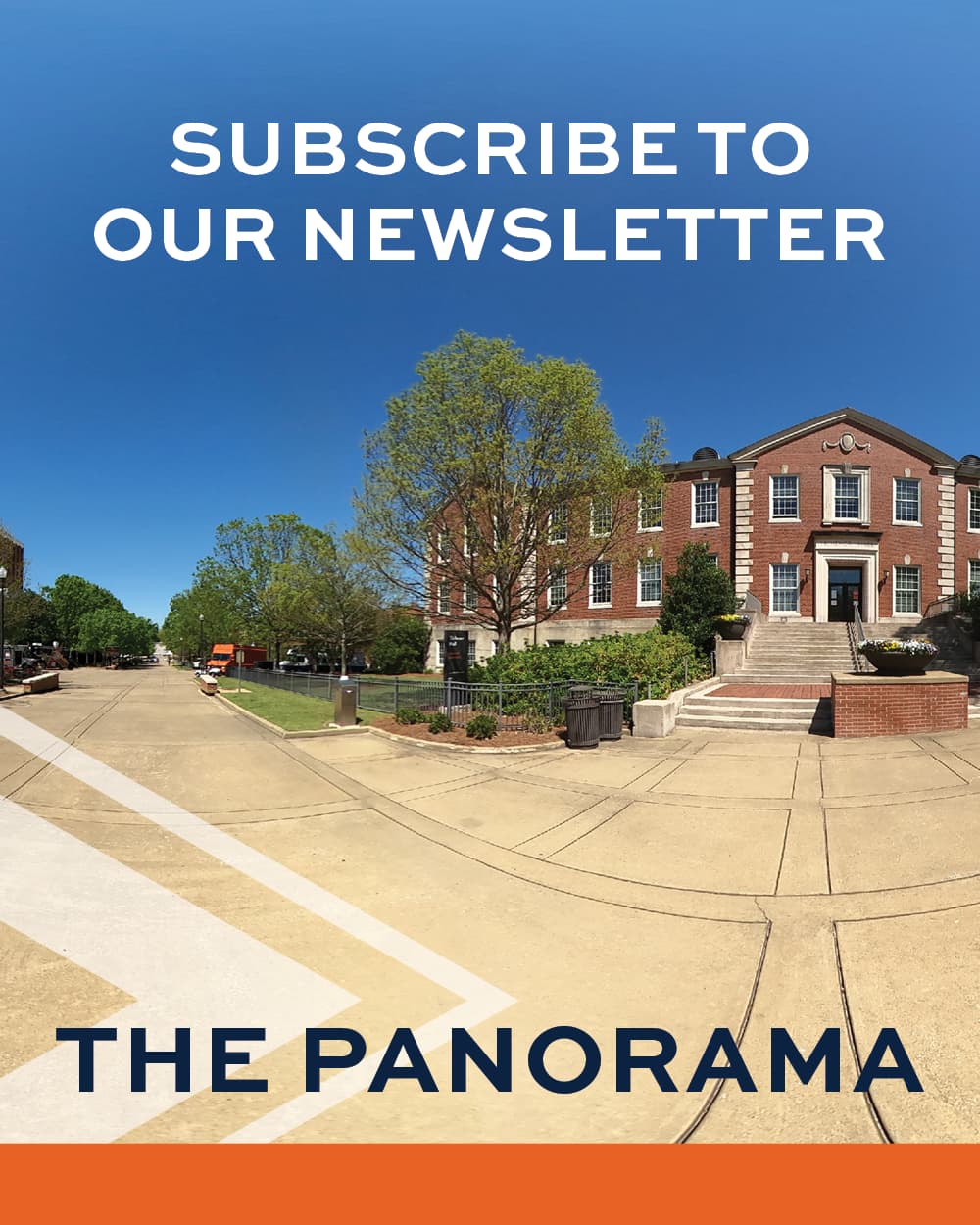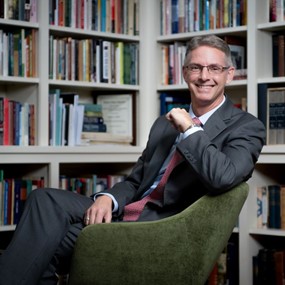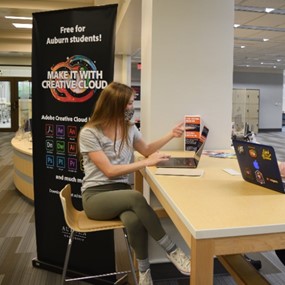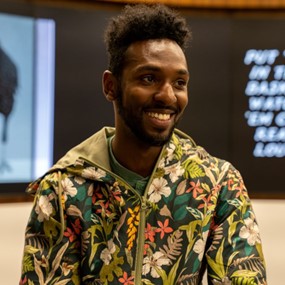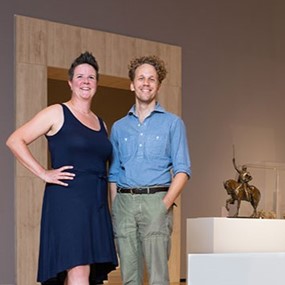Museum of East Alabama celebrates mural painted by Auburn University class

The Museum of East Alabama celebrated the creativity of Auburn University art students Thursday with a dedication ceremony for their agricultural mural, now displayed at the Whatley Agricultural Pavilion.
Museum staff, members of the public and Auburn art students were invited to the May 12 dedication ceremony of the local agriculture mural and the history of east Alabama mural, painted by regional artist Chris Johnson, which is on display on the Avenue A side of the museum.
The mural painted by nationally recognized artist and Auburn studio art professor Wendy DesChene and her students, which stands at 35x13 feet, celebrates local agricultural history and features imagery of historic equipment, advertising, local agricultural pioneers, the east Alabama landscape, farmers and farm culture. The class also made a point of showcasing diversity, including portraying the role of women in agricultural history and influential figures such as agricultural pioneer George Washington Carver and horticulturalist and agricultural professor Booker T. Whatley.
“We put together a bunch of historical images we found on the museum’s database and compiled this huge collage of 1950s-esque east Alabama agriculture,” said Buffy Reaves, a rising senior in biology minoring in studio art. “What I want people to take away is almost this nostalgic kind of feeling, even if they weren’t there for that era, they can look at it and appreciate that time period, sympathize with the people who worked in the agriculture industry and realize how important it was to eastern Alabama.”
The agricultural mural is sponsored by the Caroline Marshall Draughon Center for the Arts & Humanities and the Department of Art & Art History at Auburn University. It was installed this spring at the Whatley Agricultural Pavilion where “Old Nancy,” the museum’s turn-of-the-century steam tractor, is on display. The mural was designed to complement the tractor’s black, green and red color scheme and incorporated elements found in the museum.
“We took them through the museum, and they came up with a concept and did a great job,” said Museum of East Alabama Director Glenn Buxton. “We’re fortunate to have Auburn here to help us do some things that we just wouldn’t be able to do otherwise. Being covered like that, that mural will be there a long time. For the students, that’s something they’re going to be able to bring their grandchildren to and say, ‘I was involved in painting that.’”
This semester-long project marks the second time a painting class was wholly dedicated to creating a mural. The mural was painted in Biggin Hall, where students spread the many panels across rooms and floors like puzzle pieces. To fit them together on installation, the class had assistance from DesChene and recent painting graduates.
Myra Stephenson, who graduated from Auburn with a BFA in 2021, was among the artists hired to help students facilitate the project.
“Working with a mural, you have to make things look cohesive and learn how to compromise,” Stephenson said. “This is a great learning experience for artists, because sometimes people can get hurt when their work needs to get touched up, but it needs to look cohesive. It’s good to have the mindset now, that if something you did just needed a little bit extra, that doesn’t mean it didn’t look good. And when people see it at the museum, they’ll see how cohesive it is and how everything fits together.”
During the mural project, students improved collaboration skills, gained confidence in large-scale projects and learned from working with clients and each other. The museum’s ribbon-cutting and dedication event presented an opportunity for students to receive positive feedback from the community.
Melina Albrecht, who graduated this spring with a bachelor’s degree in psychology and minored in studio art, said she enjoyed telling part of the east Alabama story through the mural.
“This is cool because it’s another piece of art that the public can freely see,” Albrecht said. “It’s important to expand the culture of art in Alabama, and also, expand the knowledge of our history and let it be known to everyone.”
The mural painting class has been led by Auburn studio art professor Wendy DesChene for almost 16 years. As a result of the painting class, Auburn students have created dozens of murals both on and off campus, including for the Office of Human Resources, the College of Liberal Arts, the Mosaic Theatre Company, the Opelika Boys and Girls Club, Notasulga High School, the Lee County Humane Society, the pediatric unit at the East Alabama Medical Center, the Tuskegee Youth Safe Haven program and more. Since DesChene came to Auburn in 2006, the painting department has become one of the longest and most consistent mural creators in the area.
DesChene said the experience prepares students for the job market, fosters their creativity and inspires confidence in themselves as artists. Furthermore, DesChene emphasized the importance of artists making space for themselves in the community.
“People outside of the art world think what we do as artists are magical. In reality, it is highly trained skills and hard work, but it seems so grand and wonderful when shown to others who have not learned those skills,” DesChene said. “It's a great way to give back to a community. We are sharing and using our skills and expertise to help give life to a vision a community wants. The stories we bring to life allow opportunities to learn and celebrate the important people in local history.”
For more information about the Department of Art & Art History at Auburn University, visit here.
Tags: Art and Art History
